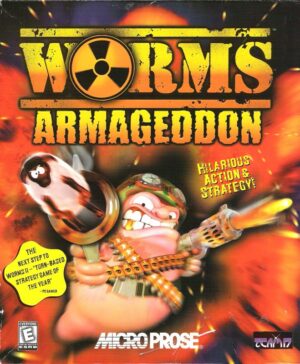Retro Replay Review
Gameplay
Star Ocean: Blue Sphere picks up immediately after the events of Star Ocean: The Second Story, dropping you onto the mysterious Planet Edifice with Opera’s starship in pieces. From the moment Opera regains consciousness, you’re tasked with assembling a three-member squad to explore a richly detailed world. Party composition is key: each crewmate brings unique skills and special abilities, and swapping between them on the fly allows you to adapt to environmental puzzles, branching dialogues, and combat tactics.
On the ground, exploration feels surprisingly open-ended for a handheld title of its era. You can wander across herb-covered plains, delve into sprawling underground caverns, or poke around alien settlements, interacting with NPCs who offer lore, side-quests, and occasional hints. Hostile creatures roam visibly on the map, and you can choose to engage them or sneak past—making every journey feel like a deliberate choice rather than a random encounter slog.
When combat does occur, it takes place on side-scrolling battlefields that blend real-time action with JRPG depth. You directly control one character—dashing, jumping, and unleashing combos—while AI-driven allies execute their own specialized routines. Building skill proficiency works as you’d expect: the more you use a particular skill, the better you become at it, unlocking powerful techniques and crafting recipes that reward long-term investment.
Blue Sphere also introduces a straightforward yet engaging bonus system. Between battles, you’ll gather materials from fallen beasts and environmental caches. These ingredients feed into a light crafting mechanic that yields healing items, weapon upgrades, and unique accessories. This layer of resource management adds strategic weight to each skirmish: should you spend your precious herbs on an instant heal or save them to craft a high-tier potion before heading deeper into unknown territory?
Graphics
Despite its Game Boy Color roots, Blue Sphere delivers surprisingly crisp pixel art and vibrant color palettes. Planet Edifice unfolds in lush greens, dusty browns, and crystal-blue water tiles that never feel monotonous. Town interiors feature lively NPC sprites, detailed tile sets, and subtle animations like flickering torches or swaying banners.
Character portraits during dialogue are expressive and well-drawn, providing emotional weight to the story even when text boxes roll at a leisurely pace. In battle, each fighter’s run, slash, and special attack animation is fluid, and flashy spell effects—bursting stars, glowing runes, or swirling energy—heighten dramatic moments. Bosses stand out with oversized sprite designs and custom animations that underscore their threat level.
Map transitions are seamless, with no jarring loading pauses. Day-night cycles and weather changes are handled through simple palette swaps, but the effect is genuine: exploring a forest at dusk feels distinctly different from a noonday expedition. Overall, Blue Sphere’s visuals hold up exceptionally well, especially when you consider the limitations of the hardware it originally graced.
Story
Picking up as a direct sequel to Star Ocean: The Second Story, Blue Sphere wastes no time in dropping you back into Opera’s crew. The narrative thrust is immediate: you must send an SOS to Earth while uncovering the mysteries of Planet Edifice. This urgency drives the early portions of the game, establishing stakes and encouraging steady progression.
Character interactions remain a highlight. Opera’s steadfast optimism grounds the party, while returning favorites like Claude and Rena make cameo appearances in radio transmissions and vision-quest sequences. New allies on Edifice introduce fresh perspectives, each motivated by personal goals that weave into the main plot. Though the story doesn’t reach the epic breadth of console entries, its tight focus keeps side-quests relevant and character growth consistent.
Dialogue choices occasionally open up optional cut-scenes or reveal secret areas, adding a layer of replayability for completionists. Themes of cooperation, survival, and rediscovery are explored without heavy-handed exposition, making Blue Sphere’s tale approachable for newcomers and nostalgic for series veterans. While it doesn’t revolutionize the Star Ocean canon, it delivers a concise, character-driven adventure that feels true to its lineage.
Overall Experience
Star Ocean: Blue Sphere stands out as one of the most ambitious handheld entries in the series. Its blend of real-time, side-scroll combat and JRPG leveling mechanics creates a rhythm that’s easy to sink hours into. Exploration never feels like filler thanks to visible enemies and interactive environments that reward curiosity.
The skill and crafting systems add meaningful progression, while optional side-quests and secret bosses extend the playtime for dedicated fans. On the downside, the audio is limited by hardware constraints, and the absence of voice acting means you rely heavily on text for character moments—but the soundtrack’s memorable melodies compensate admirably.
For anyone seeking a portable RPG with deep mechanics, engaging action, and a story that ties neatly into Star Ocean’s broader saga, Blue Sphere remains a must-play. It may be compact, but its polished combat, vibrant pixel art, and thoughtful design ensure it delivers an experience well beyond what you’d expect from a Game Boy Color cartridge.
 Retro Replay Retro Replay gaming reviews, news, emulation, geek stuff and more!
Retro Replay Retro Replay gaming reviews, news, emulation, geek stuff and more!









Reviews
There are no reviews yet.